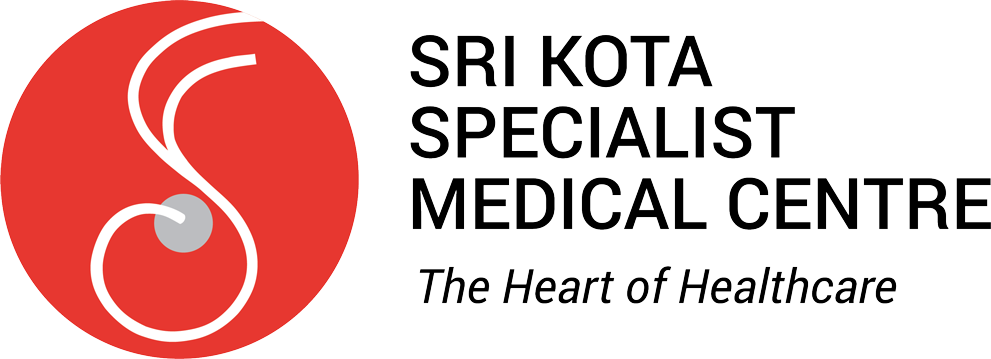Cancer: Types, causes, and available treatments in Malaysia
According to the World Health Organization, the cancer incidence in Malaysia is expected to double by 2040. There was an 11% increase in new cancer cases and nearly 30% more deaths from cancer reported in the 2012-2016 Malaysia National Cancer Registry Report. The rising number of cancer cases will become a major health issue as the growing cancer burden continues to put tremendous physical, emotional, and financial strain on people with cancer, communities, and the country’s health care system.
Good news is, 2023 marks the 20th anniversary of Malaysia’s National Cancer Control Plan, which implemented policies in cancer prevention, screening, early detection, treatment, and palliative care across the country. It began with introducing cost-effective preventive approaches to encourage people to make lifestyle changes and reduce their cancer risk. Malaysia’s Ministry of Health also issued a policy to provide screening for breast, cervical, and colorectal cancers in health clinics, which improved access to cancer screening and helped lead to more timely treatment.
For further insight, Natural Health spoke to the Consultant Clinical Oncologist of Sri Kota Specialist Medical Centre, Dr Ina Shaliny Duraisamy, on the common types of cancer in Malaysia, the risk factors for developing cancer and the various treatment options available.
What are the most common types of cancer in Malaysia?
According to the Malaysia National Cancer Registry Report 2012-2016, the top 10 most common cancers arebreast cancer, colorectal cancer, lung cancer, lymphoma, nasopharyngeal cancer, leukaemia, prostate cancer, liver cancer, cervical cancer and ovarian cancer. Narrowing down based on gender, colorectal, lung, prostate, breast and cervix cancer are the top 3 most common cancers in male and female patients respectively.
How is cancer diagnosed? Importance of screening?
There are several tests and investigations that are carried out based on a patient’s symptoms. Most of the time, a tissue biopsy is mandatory for confirmation of cancer diagnosis. Investigations such as a CT scan or a PET CT scan is usually done to ascertain cancer staging and to determine the extent of disease. Screening is done in healthy individuals, before a person develops any symptoms. With screening, cancer can be detected early and prevented from spreading when a precancerous lesion is detected and removed.
What are the risk factors for developing cancer?
There are several risk factors that can increase a person’s risk of developing cancer. Cancer usually occurs due to contribution of multiple risk factors. The risk factors for cancer are usually hereditary/ genetic predispositions, family history of cancer, ageing, environmental pollution, chemical exposure, chronic infections (eg Hepatitis B/C, HPV infection), exposure to radiation, smoking, alcohol consumption, obesity and unhealthy dietary habits.
What are the different treatment options for cancer?
There are a variety of treatment options for cancer. These include chemotherapy, targeted therapy, immunotherapy, hormonal therapy and radiotherapy. The decision of treatment for each patient is different and very personalised. It is dependent on several factors such as the cancer type, stage of disease, patient factors such as age, co-morbidities, fitness, patient’s preference (intravenous or oral), schedule of treatment, side-effects and costs of treatment.
How do lifestyle choices, such as diet and exercise, impact cancer risk?
A healthy lifestyle goes a long way in reducing cancer risk. Obesity has been recognised as one of the risk factors linked to many cancers such as breast, colorectal, oesophagus, liver, gallbladder, pancreas, kidney, thyroid, stomach, ovary and uterine cancers. A healthy diet is one that is high in fibre, fruits, vegetables, whole grains, protein from fish, nuts, soy, lean meat and low in saturated fat, sugar and processed food. Keeping active by doing a daily 30 minutes exercise and eating a healthy diet can help one maintain an ideal weight and hence reduce their risk of many cancers.
What is the role of genetics in the development of cancer?
Some people have a genetic predisposition to a particular cancer because they have an inherited faulty gene. This faulty gene is being passed down from parent to child. An individual inherits genes from both their parents, one from each. If a parent has a faulty gene, then there is a 50% chance of their child inheriting it. Being born with a faulty gene doesn’t mean that the
person will definitely get cancer, but they are at a higher risk of getting a particularly cancer, usually at a younger age compared to a person without the faulty gene. Cancers due to inherited faulty genes are a lot less common than cancers caused by gene changes from other factors. It is estimated that between 5-10% of cancers are caused by inherited faulty genes.
How does cancer affect the body and what are the potential complications?
Cancer is an abnormal growth that can occur anywhere in the body. Locally, it can invade or compress nearby structures causing pain, organ dysfunction and sometimes disability.
Cancer cells also has the ability to spread to other organs that are far away from where it began and cause symptoms. For example, if a pancreatic cancer has spread to the lungs, it can cause difficulty in breathing which can be life-threatening.
What is the current state of global cancer research and what advances are being made in Malaysia?
Cancer research is ever evolving. Scientists are making use of technology such as artificial intelligence (Al), DNA sequencing and precision oncology to improve treatment and diagnosis of cancer.
Precision oncology utilises genomic profiling and gene sequencing to aid cancer diagnosis and tailor precise treatment. The development of new drugs with targetable mutations and immunotherapy can be costly and less accessible for some. Clinical trial participation has helped many patients benefit from new drugs that may not be affordable to them.
A lot of emphasis has also been put into prevention and early diagnosis. In some countries, scientists have developed artificial intelligence-based risk profiling tools that can help screen for common cancers (eg breast cancer) with the aim of early detection. In addition to this, scientists are also developing biomarker tests to detect pancreatic, ovarian and bladder cancer at an early stage. This is an important progress for pancreatic cancer as it is one of the deadliest cancers due to its late presentation.
There are also mutation prediction tools that can detect faulty ‘BRCA’ gene carriers and assess a woman’s risks of developing breast and ovarian cancer. When women are aware of their risk of developing cancer, they are able to make informed choices, select the best outcome for themselves and have the possibility of preventing cancer. These mutation prediction tools are reliable but mostly used on European women.
Thankfully, Cancer Research Malaysia has taken the initiative to develop a mutation prediction tool that is specific to Asian women and this is a huge step in cancer prevention. Another promising development in cancer treatment is ‘CAR-T-cell’ therapy. This treatment utilises the immune system to detect and kill cancer cells. It involves removing and genetically altering immune cells (T cells) from cancer patients. The altered T cells produces proteins called chimeric antigen receptors
(CARs) that can recognise and destroy cancer cells.
Questions and answer with Dr. Ina Shaliny A/P Duraisamy, Consultant Clinical Oncologist.

